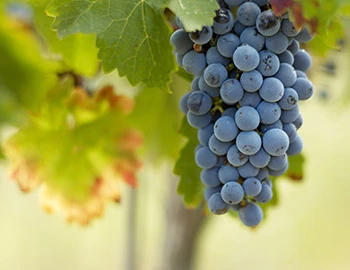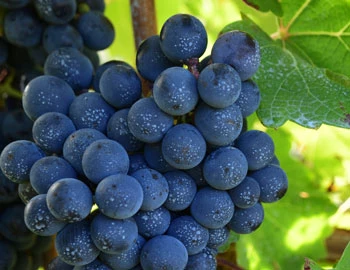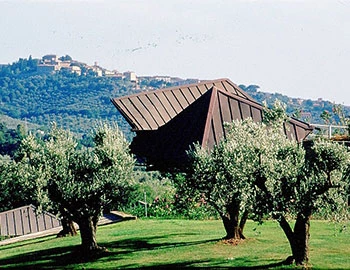Yantra 2021
IGT Toscana rosso, Sette Cieli, 750 ml

| Grape variety: | Cabernet Sauvignon, Merlot |
| Producer: | Sette Cieli |
| Origin: | Italy / Toscana |
| Other vintages: |
Description
This Tuscan Bordeaux blend literally grows in "seventh heaven", namely on the Sette Cieli estate above the Tyrrhenian Sea, where the great Tuscans are made. In the glass, it presents itself with an animating aroma of ripe wild berries, prunes and a hint of mocha. The palate is uncomplicated, harmonious and flavoursome with plenty of juicy fruit. The Yantra shines with its harmony and Tuscan temperament and will provide you with wonderful moments.
Attributes
| Origin: | Italy / Toscana |
| Grape variety: | Cabernet Sauvignon, Merlot |
| Label: | Vegan |
| Ripening potential: | 1 to 6 years after harvest |
| Drinking temperature: | 16 to 18 °C |
| Food Pairing: | Roasted lamb gigot, Beef Stroganoff, Wild boar entrecôte with Spätzli, Hearty stew with pulses, Salad with vegetables, pulses, pasta |
| Vinification: | long must fermentation, Punching down |
| Harvest: | hand-picking with simultaneous grape sel |
| Maturation: | partly in steel tank, partly in barrique/ Pièces, some months bottle storage before sale |
| Bottling: | filtration |
| Maturation duration: | 12 months |
| Volume: | 14.5 % |
| Note: | Contains sulphites |
Sette Cieli
It isn’t easy to ascend to seventh heaven. And indeed, the road to the wine estate Sette Cieli is fraught with some difficulties. You might need to take a few detours (seventh heaven isn’t on Google Maps’ radar), but the Ratti family’s wine paradise is more than worth the effort.
As is so often the case in the world of wine, this winery was created as the realisation of a dream. Erika Ratti made her dream a reality by planting the first vines in 2001 high above the Bolgheri plain, the birthplace of the world-famous Bolgheri wines. The magnificent view from up there extends from Monteverdi Marittimo, surrounded by dense forests, over the plain to the Tyrrhenian Sea shimmering on the horizon – a wonderful place!

Merlot
Everybody’s darling
Merlot is the most charming member of the Bordeaux family. It shines with rich colour, fragrant fullness, velvety tannins and sweet, plummy fruit. It even makes itself easy for the vintner, as it matures without issue in cool years as well. This is in contrast to the stricter Cabernet Sauvignon, which it complements as a blending partner. Its good qualities have made the Merlot famous worldwide. At over 100,000 hectares, it is the most-planted grape in France. It also covers large areas in California, Italy, Australia and recently in Eastern Europe. The only catch is that pure Merlot varieties rarely turn out well. Its charm is often associated with a lack of substance. Only the best specimens improve with maturity. They then develop complex notes of leather and truffles. This succeeds in the top wines from the Bordeaux appellation of Pomerol and those from Ticino, among others.

Cabernet Sauvignon
The backbone of Bordeaux
The Cabernet Sauvignon gives the Bordeaux its backbone, yielding deep violet wines with powerful tannins and endless ripening potential. It is the top dog in Médoc, and is placed in all five premier crus of Bordelais. When young, it often appears strict and unapproachable, but with advancing years, its tannins round off. It is wonderfully velvety, and yet always maintains its freshness. Typical flavours include cassis, graphite and cedar. Wherever Cabernet Sauvignon is found, Merlot is not far away. It complements the robust structure of Cabernet with softness, fruit and richness. The Cabernet Sauvignon is the most-exported vine in the world. It delivers persuasive qualities in Italy as an ingredient of the Super Tuscan, or as the flagship variety from California. There, it is lovingly titled “Cab Sauv”. Meat fans should be aware that it fantastically accompanies a grilled entrecôte. The family tree of Cabernet Sauvignon is surprising: its parents are Cabernet Franc and the white Sauvignon blanc.

Italy
Italy – Where wine is a way of life
The Italian wine regions are extremely diverse, and this is made clear in their wines. Established varieties such as Merlot, Syrah, and Sauvignon can be found on just 15 percent of the total vine growing area. The remaining 85 percent is reserved for autochthonous, indigenous varieties. More than 2,000 different grape varieties are grown under diverse conditions and pressed with various techniques into wines that reach the top tier of the international wine market.



